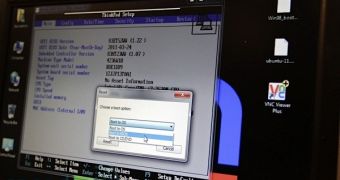Servers may have just taken the next big step in terms of functionality thanks to RealVNC, whose activities at this year's IDF, involving the VNC (Virtual Network Computing) technology, turned out to be hard to ignore. Servers of today are definitely very advanced to what they were like one or two decades ago, the same way technology overall has moved forward very quickly.
If there is anything that hasn't changed, however, it is the fact that, regardless of how powerful or sophisticated they are, servers still rely on that one piece of software called an operating system.
RealVNC means to change this, or at least reduce the reliance on that sort of software somewhat, by means of the VNC remote desktop solution, and it actually succeeded, to some extent, with some help from Intel.
As revealed during IDF (Intel Developer Forum) 2011, the company created a VNC (Virtual Network Computing) server that can be integrated inside the BIOS of a motherboard.
For those that don't know all the specifics, the BIOS is practically the oldest firmware in the PC field and handles all the hardware ins and outs.
Housed inside a special chip on a motherboard, the BIOS, depending on version, can do basic signal routing and hardware management, all the way to overclocking.
What VNC's BIOS server adds is, for one, support for the sort of remote assistance that usually needs a full-blown operating system to work.
Users will be able to connect to the machine from any web-connected PC in the world, and also to mount a disk image, all from BIOS.
For users that want to know more about VNC, it is made with the RFB (remote framebuffer) remote access protocol, which provides broad cross-platform support and simplicity, even if it does eat up a somewhat wider bandwidth than other technologies.

 14 DAY TRIAL //
14 DAY TRIAL //